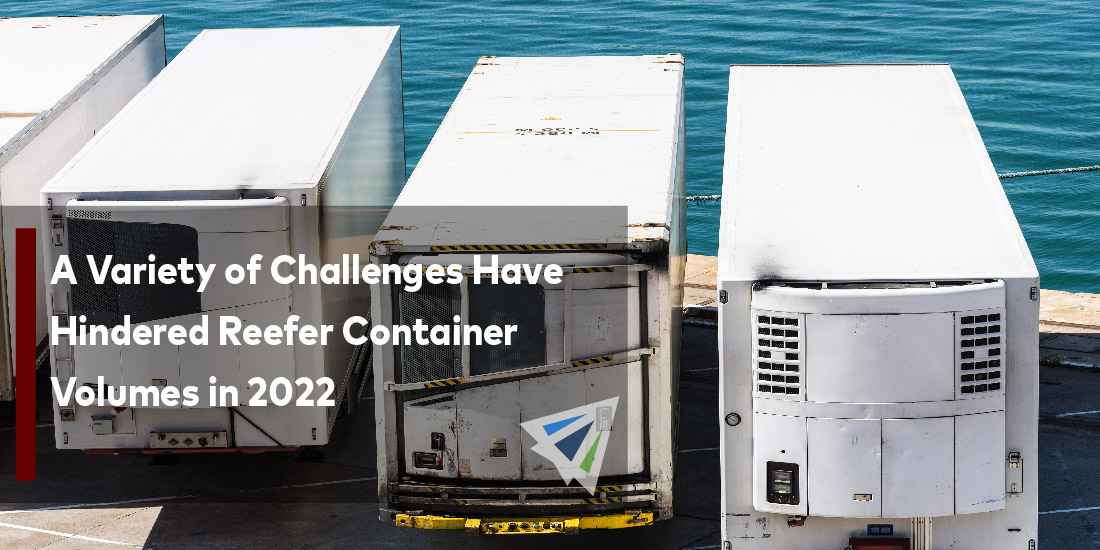A Variety of Challenges Have Hindered Reefer Container Volumes in 2022
Everyone in the supply chain industry has experienced their fair share of challenges, and that’s no different for those in the cold chain industry. A variety of challenges, such as elevated ocean freight rates, inconsistent service, and equipment shortages, have played a part in hindering reefer container volumes this year.
Impact This Has on the Cold Chain
In the first five months of this year, overall U.S. containerized refrigerated (reefer) volumes dropped 21.8 percent, mainly due to export weakness and supply chain challenges, the Journal of Commerce (JOC) reports.
Additionally, the national average cold warehouse vacancy fell to 3.4 percent in July, which is down from 4 percent in January and on top of that, national rents have rose 27 percent – at about $10 per square foot during this same period. Which, interestingly enough, gross refrigerated storage capacity has only increased by 2.2 percent since 2020, data from the JOC shows.
Container Shortages, Spotty Service
Reefer container supply remains strained, with some reefers being stuck at warehouses or ports after being pulled into service, carrying dry cargo during the peak of the pandemic. While others had to be pulled out of service completely due to damage from China’s use of chlorine to disinfect inbound containers from COVID-19.
Now, containers are sitting on trains and warehouses and it’s taking those containers out of the market – causing a tight supply of refrigerated containers.
Additionally, there’s been other shortages including shortages of assets, generator-equipped chassis, and the lack of cold storage capacity near ports. All of these issues have limited the overseas reach of U.S. exporters of perishables and other temperature-sensitive products, the JOC reports.
Ports and Others are Investing in Additional Assets
Ports and other organizations are investing in more assets to help improve and relieve some of the pressure that reefer shippers are facing.
Philadelphia is a major gateway for fresh food imports into the U.S. They have actually been an outlier in the overall downtrend in reefer volumes, with seeing imports rising 17.4 percent in the first five months of this year, as the JOC notes.
Sean Mahoney, Director of Marketing at the port said they attribute the growth in part to the opening of several “repacking” warehouses near the port. The port also has plans to build a 200,000 square foot refrigerated warehouse near the port – which already has around 360,000 square feet of on-dock cold storage. As well as plans for adding to its 2,500 reefer plugs, in the future.
Those additions, which are geared towards the specific needs of cold-chain shippers, have brought more of them into the region, Mahoney says. Something also to note, Philadelphia is the only U.S. port that has an on-dock U.S. Department of Agriculture inspection site.
Looking Ahead
Should you have any questions regarding this and how it could impact your shipments, please reach out to our team today. Additionally, we have our weekly market updates that can provide you with relevant freight news, updates, developments across the industry, and more.
